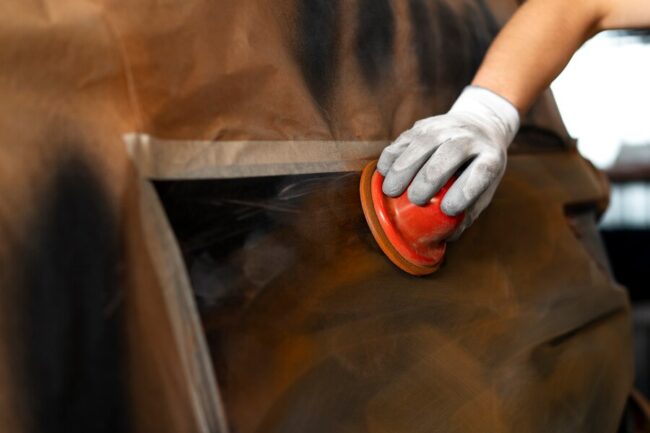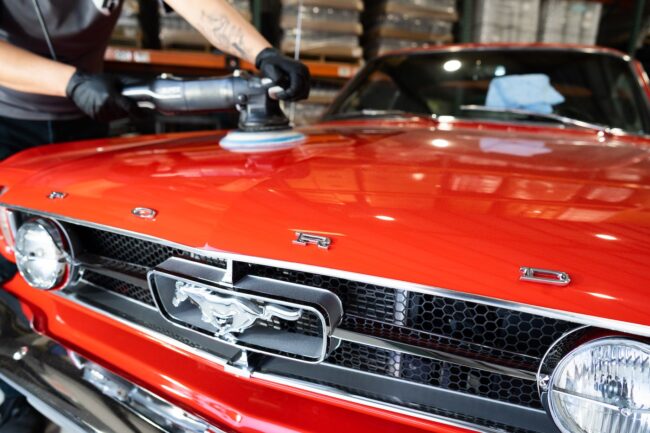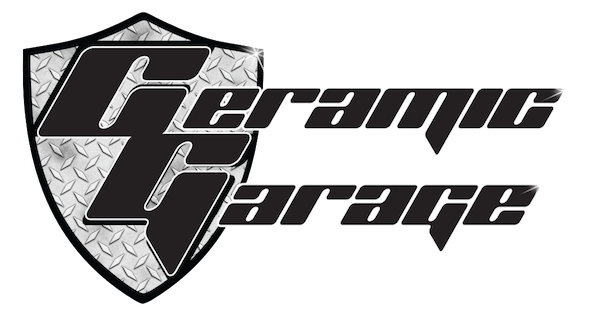In the ever-evolving world of automotive care, the debate between Ceramic Coating and Traditional Wax has become a hot topic among car enthusiasts and detailing aficionados. As we strive to keep our vehicles looking pristine and protected against the elements, the choice between these two popular options has become a crucial decision in the realm of car maintenance. Both Ceramic Coating and Traditional Wax offer unique advantages and drawbacks, sparking a constant discussion on which one truly reigns supreme in the quest for a glossy, long-lasting finish.
In this exploration of Ceramic Coating versus Traditional Wax, we’ll delve into the intricacies of each, weighing their pros and cons to help you make an informed decision on how best to shield your beloved vehicle from the challenges of the road and the elements. Join us as we navigate through the shiny world of automotive care and determine which option emerges as the ultimate guardian of your car’s aesthetic allure.
Understanding Ceramic Coating Basics
Ceramic Coating has emerged as a revolutionary solution in the realm of automotive protection. Unlike traditional wax, which forms a temporary barrier on the surface of the vehicle, ceramic coatings bond chemically with the car’s paint, creating a durable, transparent layer that is resistant to scratches, UV damage, and environmental contaminants.
This nanotechnology-derived coating not only enhances the vehicle’s gloss and shine but also offers long-lasting protection that can endure the rigors of daily driving. Understanding the basics of ceramic coating involves delving into its composition, application process, and benefits. With its hydrophobic properties and ability to repel dirt and grime, ceramic coating has become the go-to choice for many car owners seeking unparalleled protection and shine for their beloved vehicles.
Unveiling the Mysteries of Traditional Wax
 Traditional wax, a tried-and-true method of car protection, has been a staple in the automotive industry for decades. Derived from natural substances such as carnauba or beeswax, traditional wax offers a classic approach to enhancing a vehicle’s appearance and safeguarding its paintwork. The application of traditional wax involves a meticulous process of hand-polishing, where the wax is gently massaged onto the surface of the vehicle, creating a protective layer that adds depth to the paint and increases its reflective properties. While traditional wax may lack the longevity of ceramic coatings, it remains a popular choice among enthusiasts who appreciate its nostalgic charm and the ritualistic aspect of detailing.
Traditional wax, a tried-and-true method of car protection, has been a staple in the automotive industry for decades. Derived from natural substances such as carnauba or beeswax, traditional wax offers a classic approach to enhancing a vehicle’s appearance and safeguarding its paintwork. The application of traditional wax involves a meticulous process of hand-polishing, where the wax is gently massaged onto the surface of the vehicle, creating a protective layer that adds depth to the paint and increases its reflective properties. While traditional wax may lack the longevity of ceramic coatings, it remains a popular choice among enthusiasts who appreciate its nostalgic charm and the ritualistic aspect of detailing.
Understanding the mysteries of traditional wax entails exploring its origins, application techniques, and the unique aesthetic it imparts to a vehicle. Despite the rise of modern alternatives, traditional wax continues to hold a special place in the hearts of car aficionados, serving as a timeless symbol of craftsmanship and dedication to automotive excellence.
Durability: A Key Factor to Consider
When it comes to protecting your vehicle’s paintwork, durability is a crucial factor to consider. Ceramic coatings are renowned for their exceptional durability, with some products boasting longevity of up to several years. Unlike traditional wax, which requires periodic reapplication to maintain its protective properties, ceramic coatings form a permanent bond with the paint, offering long-lasting defense against scratches, swirl marks, and environmental contaminants.
However, the durability of ceramic coatings comes at a cost, both in terms of the initial investment and the expertise required for proper application. On the other hand, traditional wax may require more frequent touch-ups to sustain its protective layer, but it offers a more budget-friendly option for those seeking basic paint protection. Ultimately, the choice between ceramic coating and traditional wax depends on your priorities and budget, with durability playing a pivotal role in the decision-making process.
Application: Ease versus Precision
One of the key considerations when choosing between ceramic coating and traditional wax is the application process. Ceramic coatings typically require a more precise and meticulous application compared to traditional wax. Due to their chemical bonding nature, ceramic coatings demand thorough surface preparation, including paint correction and decontamination, to ensure proper adhesion and longevity. Application often involves multiple layers and requires specialized tools and techniques, making it a task best suited for experienced detailers or enthusiasts willing to invest time and effort.
On the other hand, traditional wax application is generally more straightforward and forgiving. With basic tools such as applicator pads and microfiber towels, wax can be easily applied by hand or with a buffer, making it accessible to beginners and seasoned detailers alike. While traditional wax may not offer the same level of protection and longevity as ceramic coatings, its ease of application appeals to those looking for a quick and hassle-free way to enhance their vehicle’s appearance.
Gloss and Shine: The Ultimate Showdown
 A glossy, mirror-like finish is the hallmark of a well-maintained vehicle, and both ceramic coatings and traditional wax are renowned for their ability to enhance shine. However, the methods by which they achieve this lustrous appearance differ significantly.
A glossy, mirror-like finish is the hallmark of a well-maintained vehicle, and both ceramic coatings and traditional wax are renowned for their ability to enhance shine. However, the methods by which they achieve this lustrous appearance differ significantly.
Ceramic coatings are celebrated for their ability to create an intense, hydrophobic shine that repels water and enhances the depth of the paint. This is due to the coating’s molecular bonding with the paint surface, which creates a smooth, glass-like finish that reflects light with unparalleled brilliance. Additionally, ceramic coatings are resistant to oxidation and UV damage, ensuring that the shine remains vibrant and long-lasting.
Traditional wax, on the other hand, offers a more natural and warm shine that is achieved through the use of natural waxes and oils. While traditional wax may not provide the same level of hydrophobicity or durability as ceramic coatings, it imparts a rich, deep shine that is prized by enthusiasts for its classic appeal.
Protection Against the Elements
Protecting your vehicle against the elements is essential for maintaining its appearance and resale value. Both ceramic coatings and traditional wax offer varying degrees of protection against environmental hazards such as UV rays, acid rain, bird droppings, and road salts.
Ceramic coatings form a durable barrier that shields the paintwork from these elements, preventing oxidation, fading, and corrosion over time. The hydrophobic properties of ceramic coatings also make it easier to clean your vehicle, as dirt and grime are less likely to adhere to the surface.
Traditional wax provides a layer of protection by sealing the paintwork and creating a barrier against moisture and contaminants. While not as durable as ceramic coatings, regular applications of wax can help maintain the integrity of the paint and extend its lifespan.
When it comes to protection against the elements, ceramic coatings offer superior durability and resistance compared to traditional wax. However, both options provide valuable protection that can help preserve your vehicle’s appearance and maintain its resale value in the long run.
Maintenance: Long-Term Considerations
Maintaining the appearance of your vehicle is an ongoing commitment that requires regular care and attention. When choosing between ceramic coatings and traditional wax, it’s essential to consider the long-term maintenance requirements of each option.
Ceramic coatings are renowned for their low-maintenance properties, thanks to their hydrophobic and self-cleaning abilities. Once applied, ceramic coatings require minimal upkeep, with regular washing and occasional touch-ups to maintain their protective layer. However, proper maintenance is crucial to ensure the longevity and effectiveness of the coating.
Traditional wax, while offering excellent protection and shine, requires more frequent maintenance to preserve its protective layer. Regular applications of wax are necessary to maintain the integrity of the paintwork and provide ongoing protection against the elements. Additionally, wax can degrade over time, especially in harsh environmental conditions, requiring more frequent reapplications to maintain its effectiveness.
Cost Analysis: Investing in Brilliance
When considering ceramic coating versus traditional wax, cost is a significant factor to weigh. Ceramic coatings typically involve a higher upfront investment compared to traditional wax. The cost of ceramic coating products and professional application services can vary depending on factors such as the size of the vehicle, the quality of the coating, and the expertise of the installer. Additionally, ceramic coatings may require additional preparation steps such as paint correction, which can increase the overall cost.
On the other hand, traditional wax is generally more affordable and accessible, with a wide range of products available at varying price points. DIY enthusiasts can save money by applying wax themselves, although professional detailing services are also available for those seeking a professional finish.
When evaluating the cost of ceramic coating versus traditional wax, it’s essential to consider the long-term benefits and value each option provides. While ceramic coatings may require a higher initial investment, they offer superior durability and protection, potentially saving money on maintenance and repairs in the long run. Traditional wax, while more budget-friendly upfront, may require more frequent applications and touch-ups to maintain its protective properties.
In the realm of automotive care, the choice between Ceramic Coating and Traditional Wax is a deeply personal one, influenced by factors such as budget, preferences, and long-term goals. While Ceramic Coating offers unmatched durability and protection, Traditional Wax provides a timeless shine and accessibility. At the end of the day, what matters most is investing in regular care and maintenance to keep your vehicle looking its best for years to come. By understanding the differences between these options and considering your individual needs, you can make an informed decision that suits your lifestyle and priorities.
Ready to give your vehicle the ultimate protection and shine it deserves? Contact Ceramic Garage today at (209) 780-7170 or email us at support@ceramicgarage.com to learn more about our cutting-edge Ceramic Coating services. Let us help you harness the power of technology to safeguard and enhance your vehicle’s aesthetics. Your car deserves the best – trust Ceramic Garage for unparalleled protection and shine.



